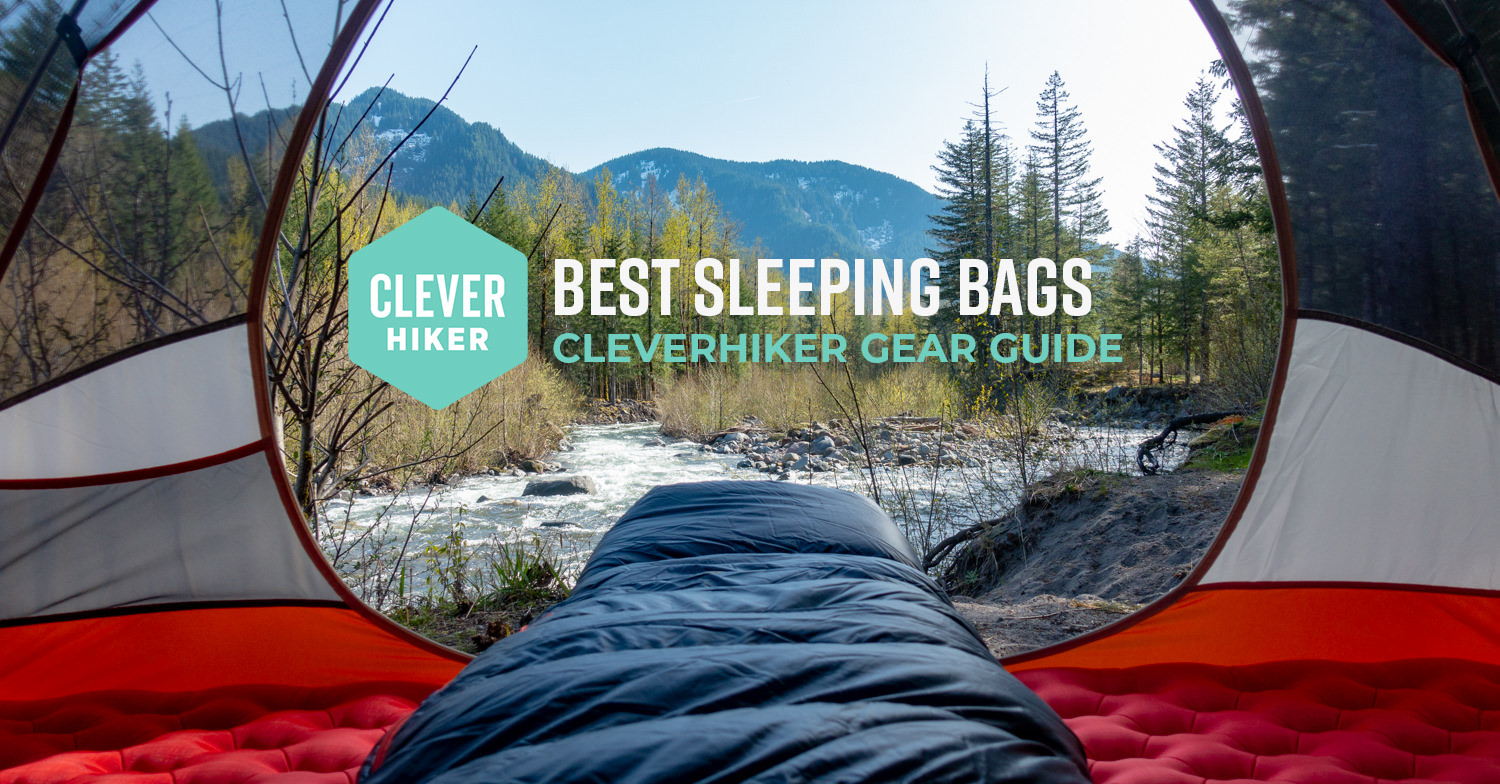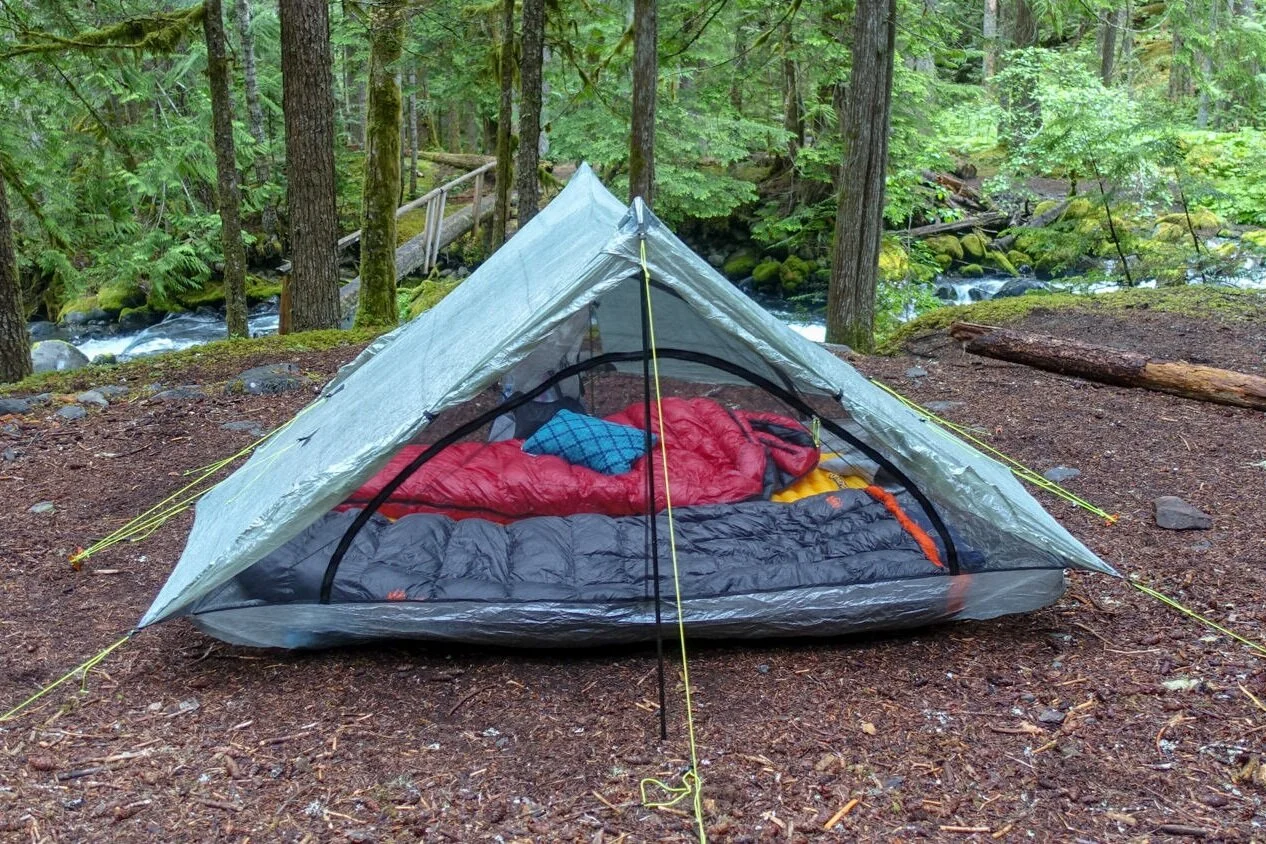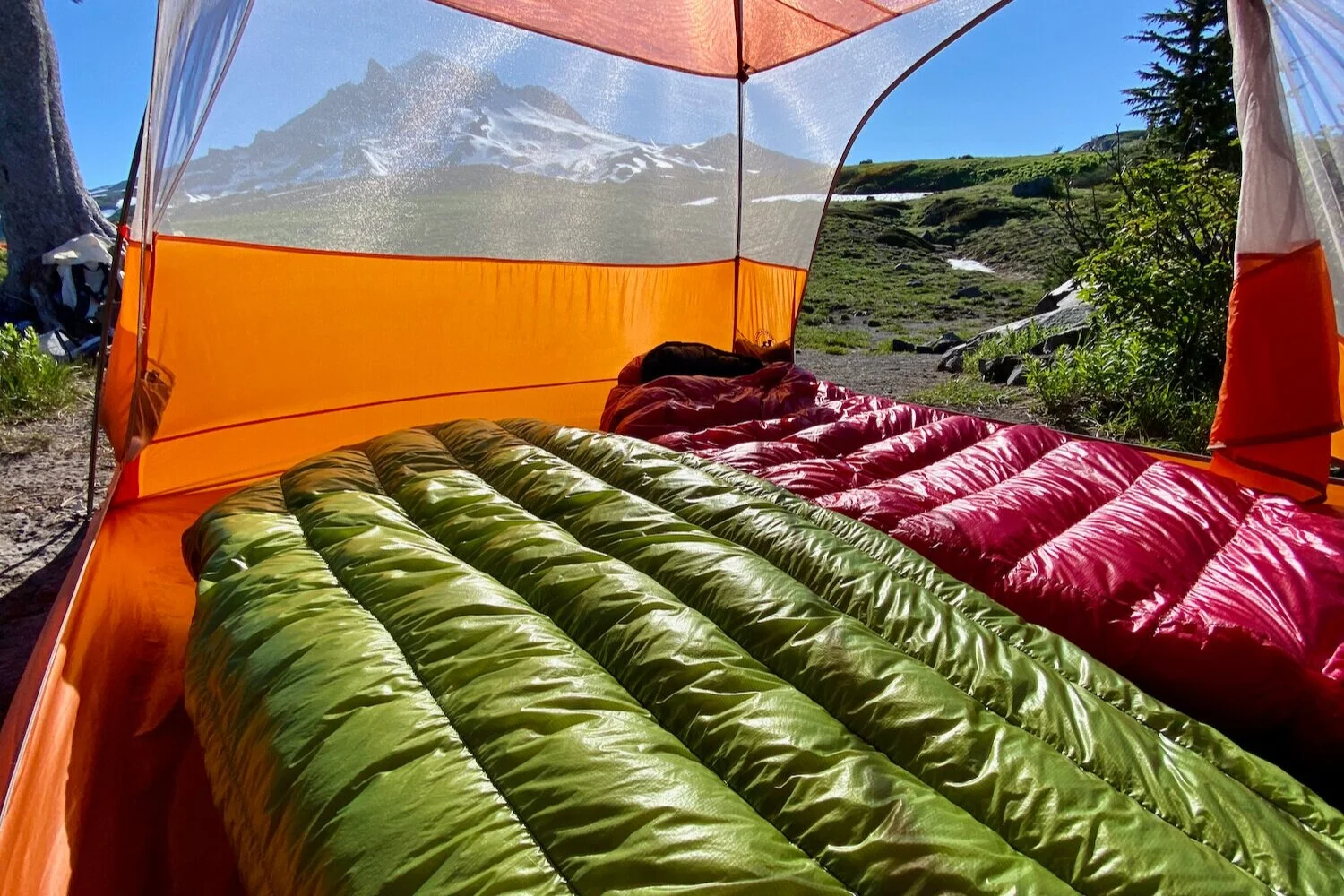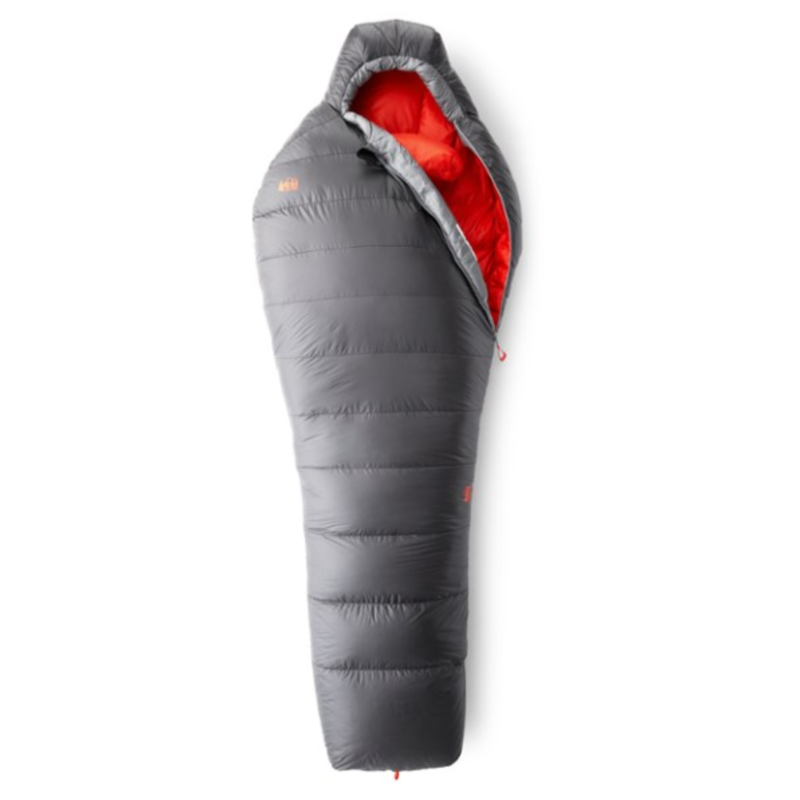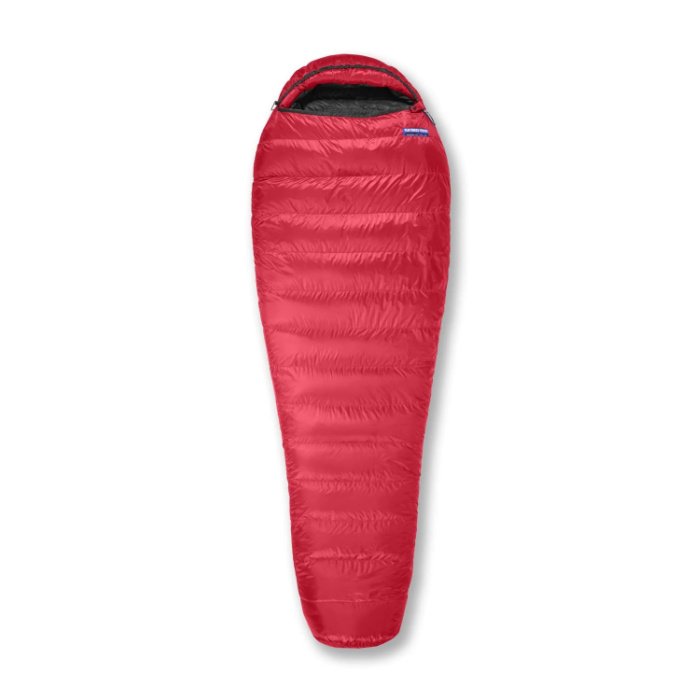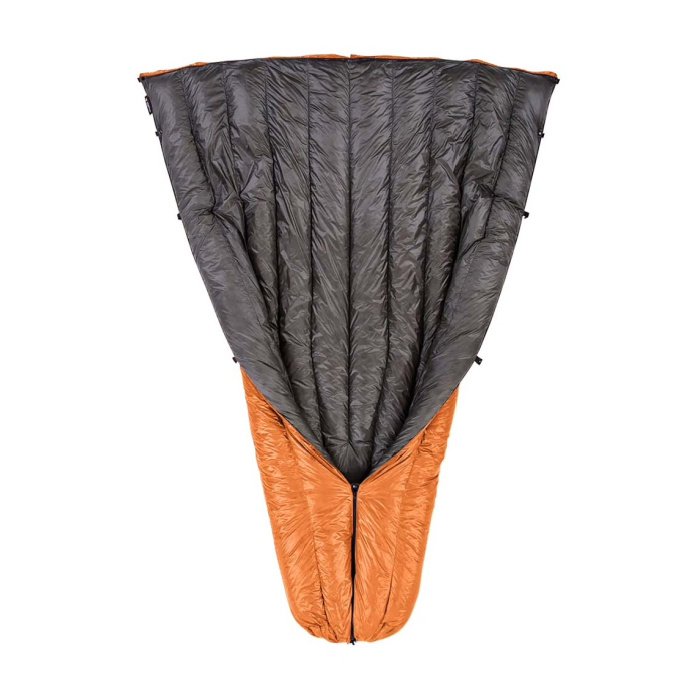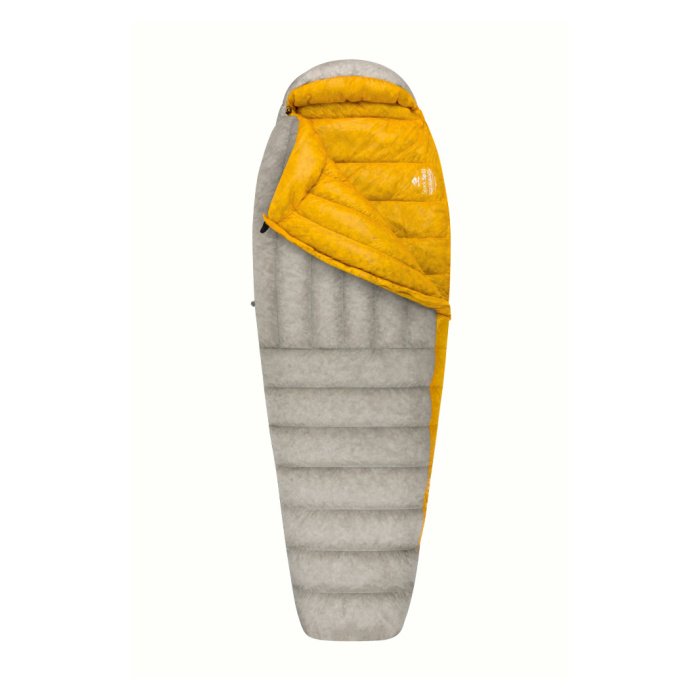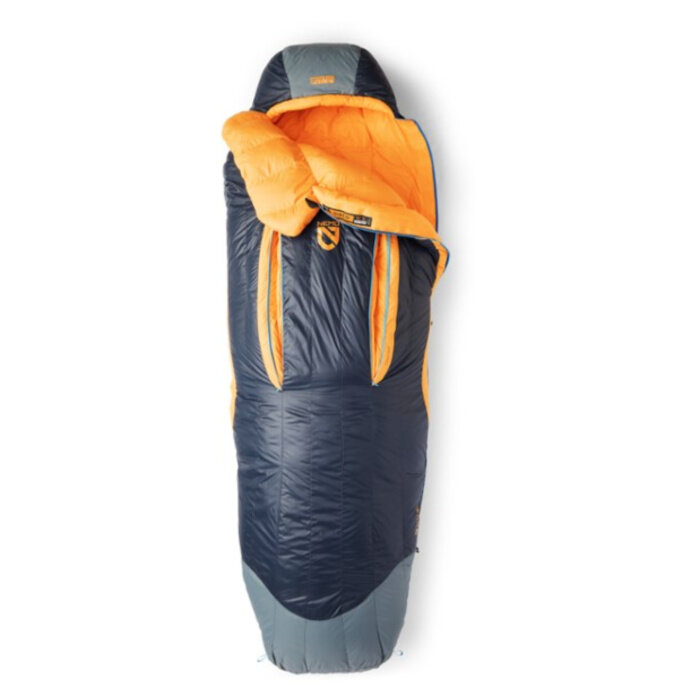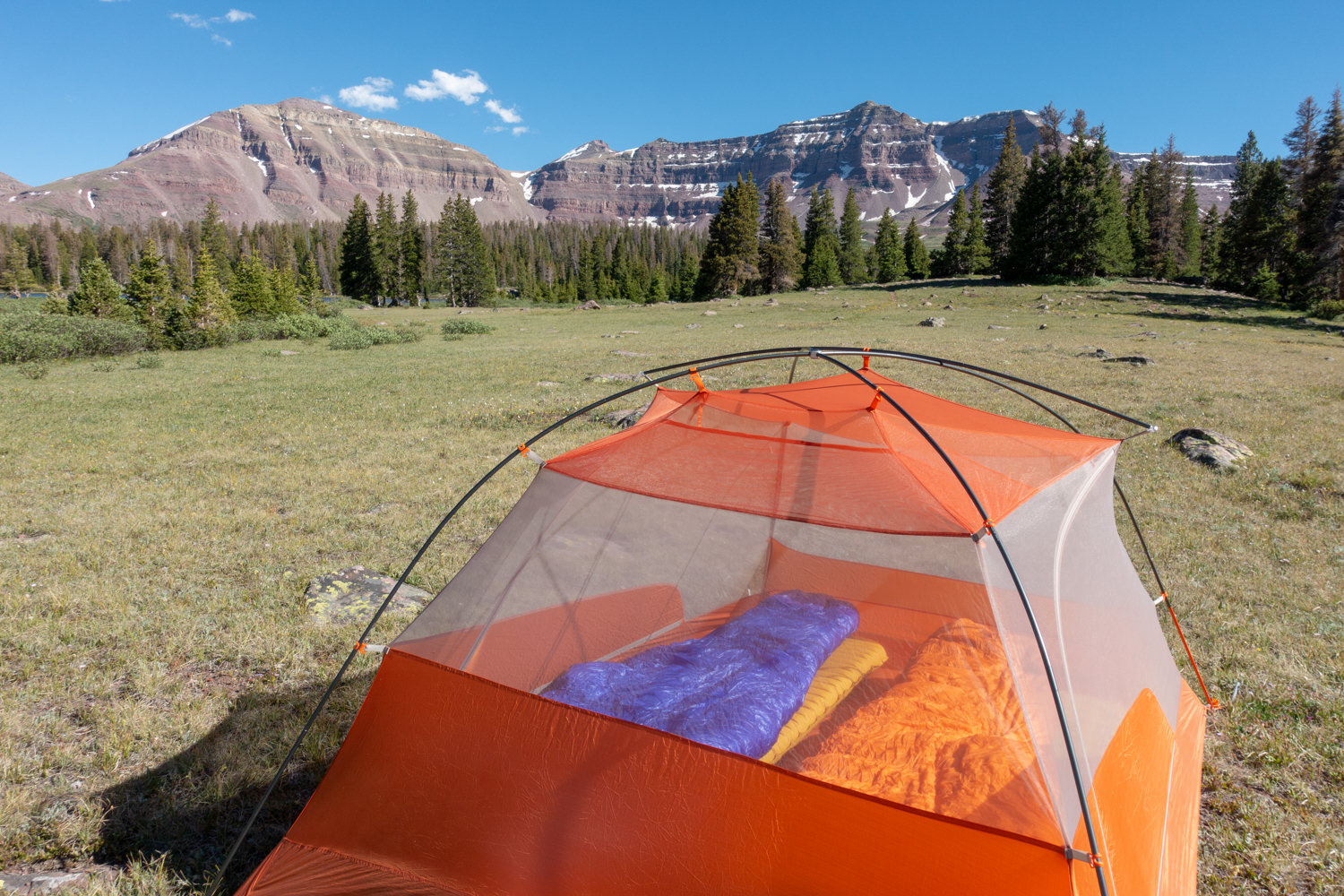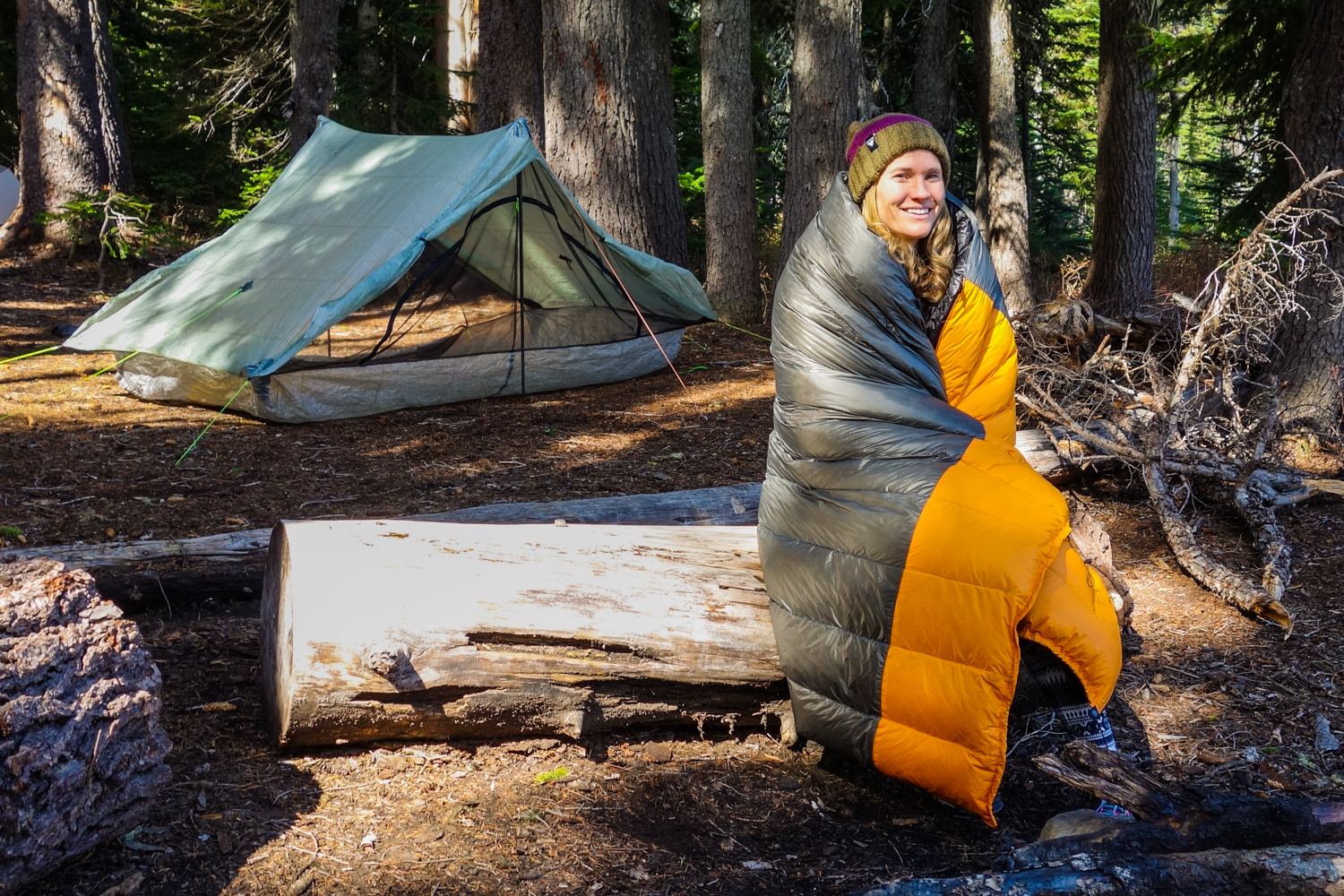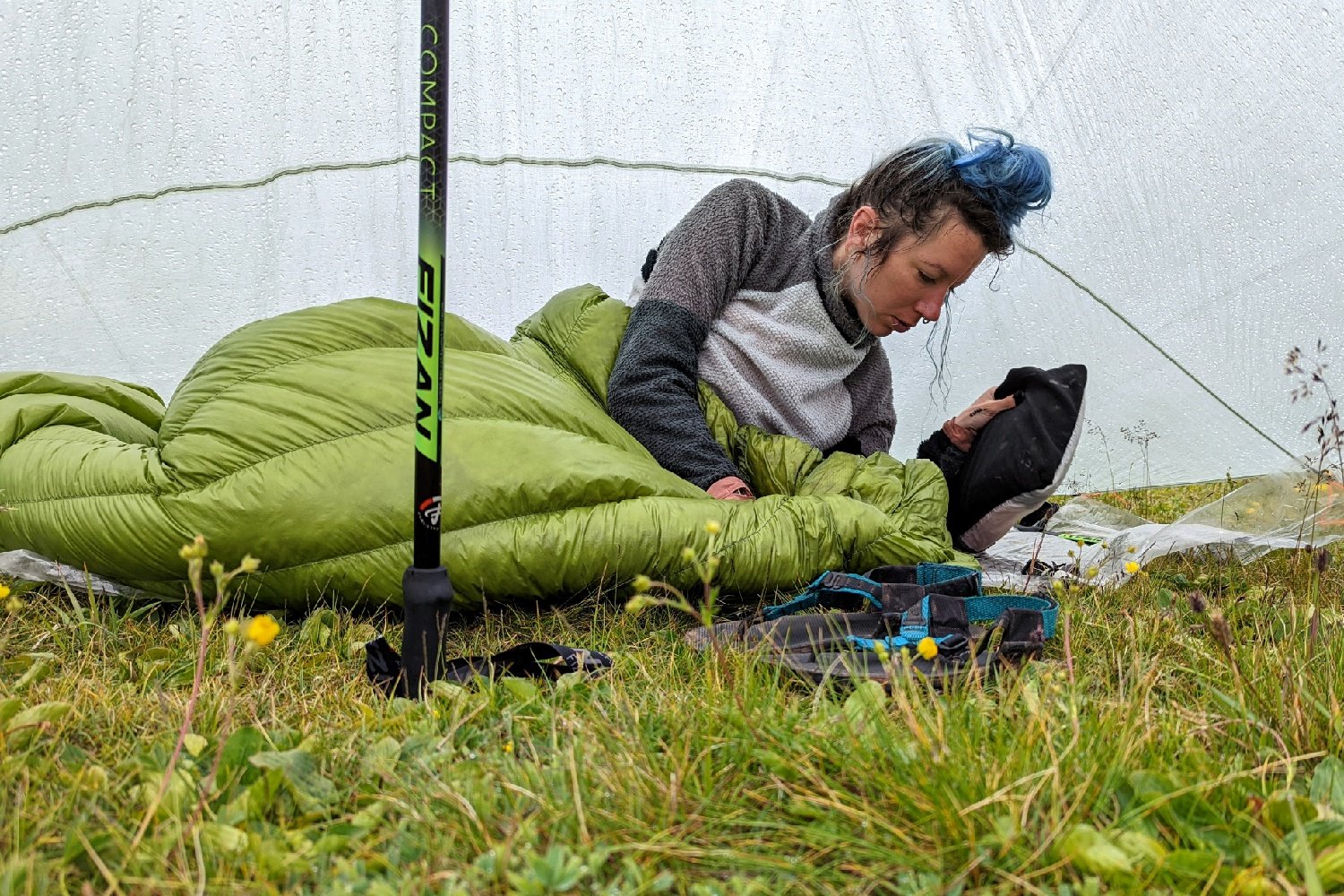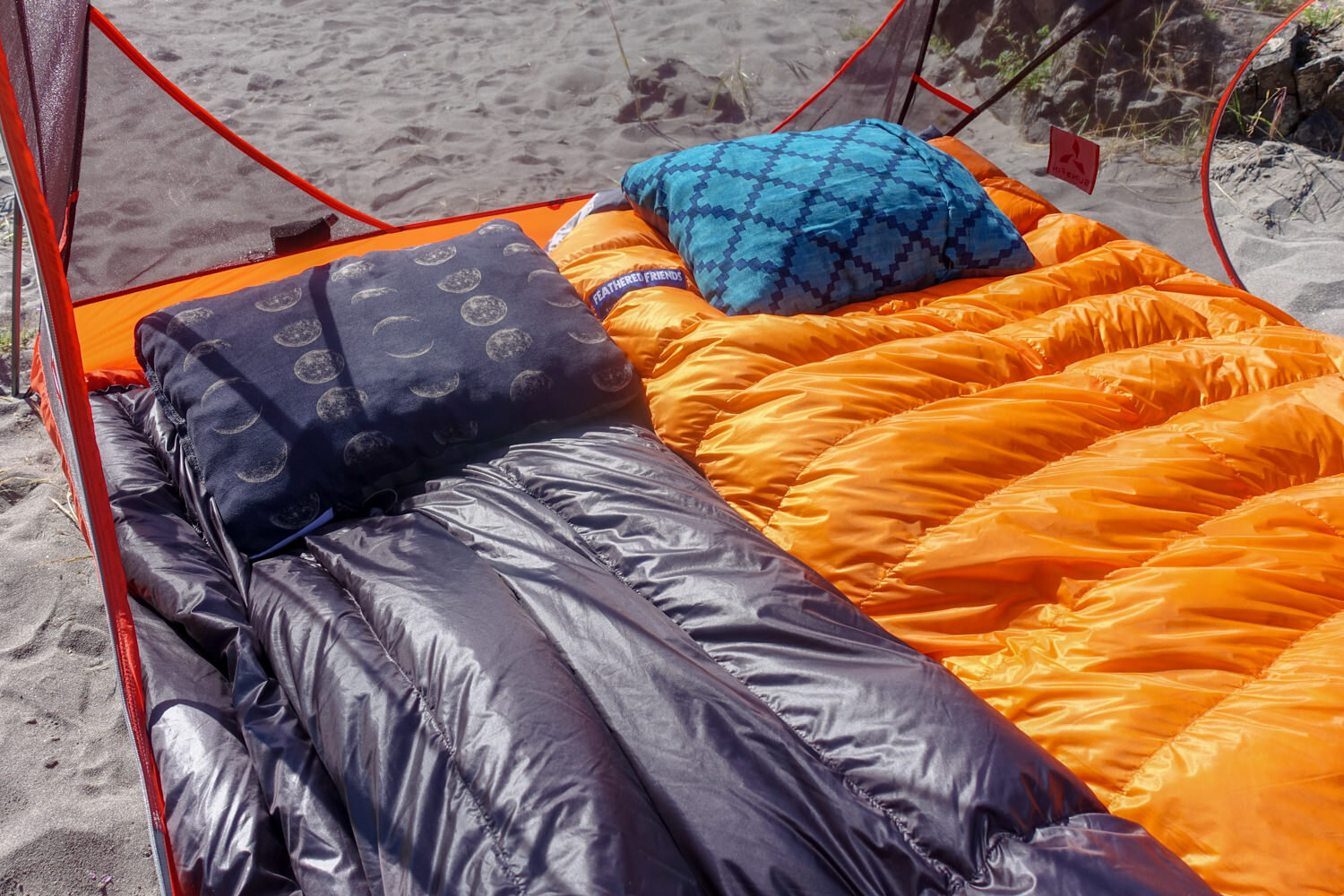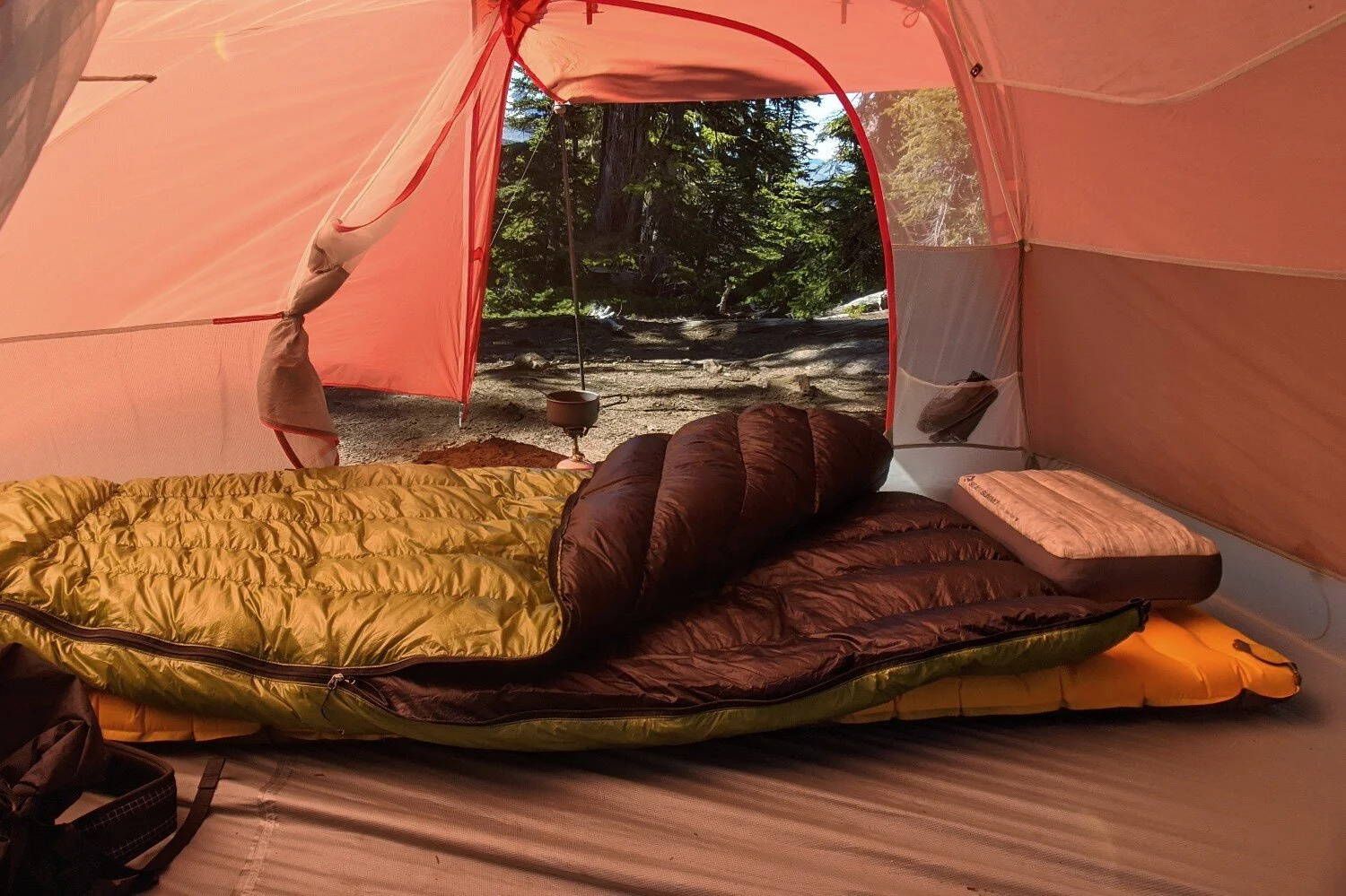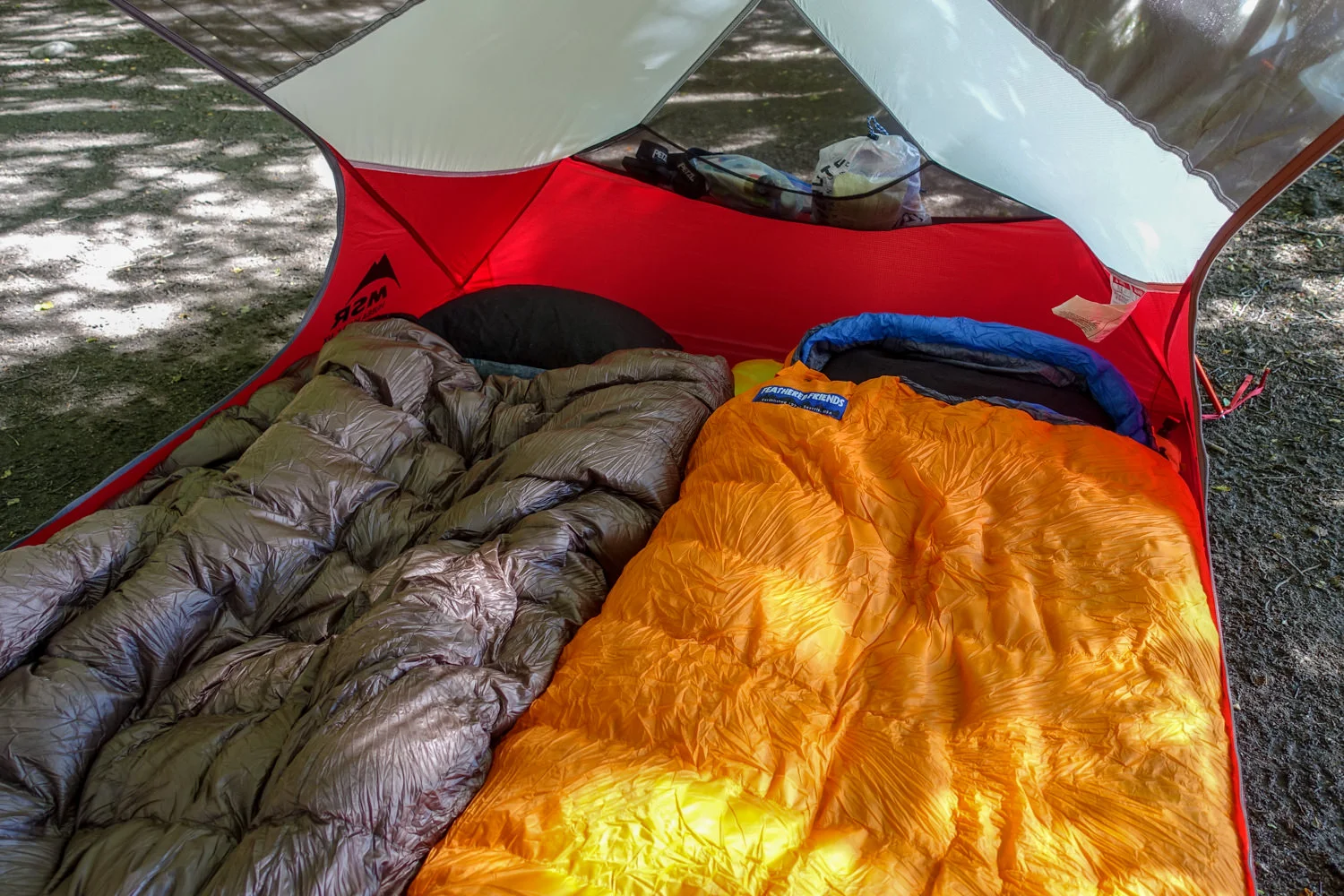PHOTO CREDIT: DAVE COLLINS (CLEVERHIKER.COM)
Author: Casey Handley | Editor: Dave Collins
Last Updated: June 20, 2023What’s new: After more field testing and analysis, we reconfirmed many of our choices on this list. But there have also been some big changes. We replaced the Feathered Friends Swallow and Egret UL with the Swallow and Egret YF, which cost significantly less but weigh less than two ounces more. The Swallow and Egret also moved up to the number two spot on our list because of their excellent balance of price, quality, and weight. After a few hundred more miles of hard use and durability testing, we also moved the ZPacks Classic 20 up a couple of spots.
If you've ever spent a night in the backcountry shivering uncontrollably, teeth chattering, just waiting for the sun to come up, then you know exactly how important carrying a high-quality sleeping bag is.
Well, fear not! We’re here to help make sure you’re snuggled up cozy in your toasty warm sleep sack and never have to experience a night like that.
Below you’ll find a ton of tutorial information on how to choose the best sleeping bag for your needs as well as a detailed list with reviews of our favorite sleeping bags. Our recommendations are fully independent and you’ll be hard-pressed to find a team with more hands-on sleeping bag testing experience.
We hope this guide helps you find a fantastic sleeping bag to keep you warm and cozy on your backcountry adventures for many years to come!
REI Magma 15 - PHOTO CREDIT: HEATHER ELDRIDGE (CLEVERHIKER.COM)
Quick Recommendations
Check out this quick list of our favorite sleeping bags, or continue scrolling to see our full list with in-depth reviews.
Best sleeping bag overall for comfort, price & quality: REI Magma 15 (view women's)
Best sleeping bag for summer trips & warm sleepers: REI Magma 30 (view women's)
Best warmth-to-weight ratio: Feathered Friends Swallow YF 20 / Egret YF 20
Exceptionally high-quality & warm sleeping bags: Western Mountaineering Alpinlite 20
Best backpacking quilt overall for weight, versatility & price: EE Revelation Quilt 20
Best budget sleeping bag: Kelty Cosmic 20 (view women's)
Best ultralight sleeping bag: Sea to Summit Spark 18 / Flame 15
Great value quilt with an excellent warmth-to-weight ratio: REI Magma Trail Quilt 30
Quilt/sleeping bag hybrid that’s about as ultralight as you can get: ZPacks Classic 20
Best synthetic sleeping bag: Marmot Trestles Elite Eco 20 (view women's)
Luxurious bags for those who like a little wiggle room: NEMO Disco 15 (view women's)
Enlightened Equipment Revelation - PHOTO CREDIT: DAVE COLLINS (CLEVERHIKER.COM)
What’s Most Important to You in a Backpacking Sleeping Bag?
PRICE - Sleeping bags can get pretty pricey, but we think it’s worth it to invest in a high-quality bag that will keep you warm and provide good rest after a hard day on the trail. Budget options will work well if you don’t backpack much or you’re just getting into it. But for those who go out often, spending more will likely be worth it for higher quality materials, a superior warmth-to-weight ratio, and better packability.
Best value sleeping bags
REI Magma 15 (women’s Magma 15)
REI Magma 30 (women’s Magma 30)
Best budget sleeping bags
Kelty Cosmic 20 (view women’s)
Best high-end sleeping bag
REI Magma Quilt & Western Mountaineering Alpinlite - PHOTO CREDIT: DAVE COLLINS (CLEVERHIKER.COM)
WARMTH-TO-WEIGHT - Your sleeping bag will be one of the four heaviest items in your backpack (tent, backpack, sleeping bag, sleeping pad), so it’s critical to strike a good balance between warmth and weight. Ideally, you'd own 2-3 sleeping bags for different seasons, but most backpackers start out by choosing one bag that will keep them warm at the lowest temperatures they plan to hike in.
Many hikers opt for a sleeping bag with a lower limit in the 20s because that’ll be versatile enough for use in most seasons - from high elevation summer trips to chilly shoulder seasons. If you know you’ll do most of your hiking in warmer summer months, a sleeping bag rated down to 30 will likely work just fine and will save some weight and bulk in your pack.
Best ultralight sleeping bags
Warmest lightweight sleeping bags
REI Magma 15 - PHOTO CREDIT: CASEY HANDLEY (CLEVERHIKER.COM)
SLEEPING BAGS VS. QUILTS - Mummy sleeping bags work better in cold and windy conditions because they trap body heat more efficiently and they’re less drafty. Quilts provide a better warmth-to-weight ratio by cutting out the material and insulation that’s normally compressed under your body in a mummy bag. If a quilt sounds more like your style, you’ll love our Best Backpacking Quilts guide.
We usually prefer the flexibility, weight, and comfort of quilts when nighttime temperatures are above freezing (32°F) and mummy bags when temperatures dip below freezing.
Best mummy sleeping bags
Best backpacking quilts
ZPacks Classic (left) & WM Alpinlite 20 (right) - PHOTO CREDIT: DAVE COLLINS (CLEVERHIKER.COM)
DOWN VS. SYNTHETIC - Down insulation is more expensive but has a better warmth-to-weight ratio and packs down smaller. Down sleeping bags also last longer than synthetic bags if taken care of properly. Synthetic sleeping bags are often heavier and bulkier than down bags, but they tend to cost less and retain heat a bit better when wet. Down bags are typically better performers, so they make up the majority of our recommendations.
Best down sleeping bags
Best synthetic sleeping bag
WM Versalite & Feathered Friends Egret - PHOTO CREDIT: DAVE COLLINS (CLEVERHIKER.COM)
Sortable Sleeping Bag Comparison Table
| Sleeping Bag | Price | Weight | CH Warmth Rating |
|---|---|---|---|
| 1. REI Magma 15 | $399 | 28.0 oz. | 🔥🔥🔥🔥 |
| 2. REI Magma 30 | $349 | 19.8 oz. | 🔥🔥 |
| 3. WM Alpinlite 20 | $645 | 31.0 oz. | 🔥🔥🔥🔥 |
| 4. EE Revelation Quilt 20 | $335 | 22.5 oz. | 🔥🔥🔥 |
| 5. Kelty Cosmic 20 | $165 | 42.0 oz. | 🔥🔥🔥 |
| 6. Sea to Summit Spark 18 | $509 | 24.0 oz. | 🔥🔥🔥 |
| 7. FF Swallow 20 | $629 | 27.0 oz. | 🔥🔥🔥🔥 |
| 8. REI Magma Trail Quilt 30 | $329 | 19.0 oz. | 🔥🔥 |
| 9. Marmot Trestles Elite 20 | $169 | 38.0 oz. | 🔥🔥🔥 |
| 10. NEMO Disco 15 | $320 | 43.0 oz. | 🔥🔥🔥 |
| 11. ZPacks Classic 20 | $449 | 20.0 oz. | 🔥🔥🔥 |
Best Sleeping Bags of 2023
BEST SLEEPING BAG OVERALL FOR COMFORT, PRICE & QUALITY
MSRP: $399 / $349
COMFORT RATING: 28°F / 39°F
WEIGHT: 1 lb. 12 oz. / 1 lb. 3.8 oz.
PROS: Very affordable for the quality, lightweight, packable, warm, no snag zipper, Responsible Down Standard (RDS) certified
CONS: We see these as more of 20° & 35° bags
BOTTOM LINE: The REI Magma 15 and Magma 30 (women’s Magma 15 and 30) sleeping bags offer a combination of warmth, weight, and cost that few other backpacking sleeping bags can match. The Magma gets it right where it matters the most - quality materials, a solid warmth-to-weight ratio, and a well-shaped footbox and hood.
Part of what makes the Magma bags so light is their trimmed-down design. The true mummy shape is highly heat-efficient because it eliminates dead space your body would have to warm up before the bag can do its job. But the Magma bags are still plenty roomy for side sleepers and hikers who shift around often at night.
Both models regularly find their way into our backpacks depending on the season, but which Magma should you choose? If you're looking for one sleeping bag that can do it all at a very fair price, the Magma 15 is an excellent choice. If most of your backpacking trips are during summer months or you’re a warm sleeper, the Magma 30 is perfect for keeping pack weight to an absolute minimum.
Check out our full review of the Magma sleeping bags here.
BEST WARMTH-TO-WEIGHT RATIO
MSRP: $529 / $509
COMFORT RATING: N/A
WEIGHT: 1 lb. 12.7 oz. / 1 lb. 13 oz.
PROS: Lightweight, high-quality materials, excellent warmth-to-weight ratio, full-length draft tube, RDS certified
CONS: Expensive
BOTTOM LINE: Feathered Friends makes some of the absolute highest quality down sleeping bags on the market, and the Swallow YF 20 and women's Egret YF 20 are no exception.
The Swallow and Egret are very light, feel soft against the skin, and are filled with responsibly-sourced 950+ fill-power goose down - which is about as high-quality as down comes. Feathered Friends doesn’t list EN temperature ratings, but we’ve found their ratings to be more conservative than most of the competition. In other words, this is one of the few instances where we would actually trust a 20-degree bag to around 20 degrees.
Certainly the high price is one of the first things you’ll notice about the Swallow and Egret, but we can assure you that they’re worth every penny if you’ll use them often.
EXCEPTIONALLY HIGH-QUALITY & WARM SLEEPING BAGS
MSRP: $645
COMFORT RATING: 25°F
WEIGHT: 1 lb. 15 oz.
PROS: Excellent warmth-to-weight ratio, high-quality materials, no-snag zipper, full-length draft tube, 360° down collar
CONS: Expensive
BOTTOM LINE: Western Mountaineering makes some of the highest quality, lightest, and warmest backpacking sleeping bags we've ever tested. And the Alpinlite is the star of their lineup in our opinion. Every detail on this bag is dialed in - no-snag zipper, draft collar, well-shaped footbox and hood, full-length draft tube - it all comes together to give this bag one of the best warmth-to-weight ratios available.
The Alpinlite comes with a sizable price tag, but it will last for decades if treated well. We’ve trusted ours to keep us warm on tons of trips into the backcountry, and it’s still going strong. The backpacking community agrees - the Alpinlite is consistently named as a favorite among thru-hikers who need solid gear that can be put through the wringer.
While the Alpinlite is our favorite Western Mountaineering sleeping bag in terms of warmth-to-weight and comfort, we think several other bags from their ExtremeLite series are worth a look. If you don’t mind a more narrow fit in favor of saving weight, you’ll probably love the UltraLite. For cold sleepers who need some extra insulation, the Versalite 10 is an excellent choice.
BEST BACKPACKING QUILT FOR WEIGHT, VERSATILITY & PRICE
MSRP: $335
COMFORT RATING: N/A
WEIGHT: 1 lb. 6.5 oz.
PROS: Ultralight, versatile, affordable for the quality, stock & customizable options available, packable, RDS certified
CONS: Not warm enough for sub-freezing trips
BOTTOM LINE: The flexible design of the Enlightened Equipment Revelation quilt has been a game changer for our backcountry trips, and we love it's warmth-to-weight ratio. We tend to prefer quilts over sleeping bags for most of our trips where we don’t expect temps to dip below freezing.
This quilt can be left open like a blanket on warm nights or cinched up tight when the temperature drops. You can choose to custom order your Revelation to your desired color, size, and warmth, so we bumped up a size in length and width for full coverage on chilly nights. We’ve found that the 20°F model keeps us warm to right around freezing or just a little below.
Quality like this will usually set you back a pretty penny, but the Revelation comes in at an amazing price when compared to similar quilts. We’ve been using ours for years, and it’s still one of the best investments we’ve made in our backpacking setup.
For more info, check out our full review of the Revelation here.
BEST BUDGET SLEEPING BAG
MSRP: $165
COMFORT RATING: 32°F
WEIGHT: 2 lb. 10 oz.
PROS: Affordable, durable, warm, stash pocket
CONS: Heavier/bulkier than some, lower-quality materials, zipper can snag
BOTTOM LINE: The Kelty Cosmic 20 (view women’s) is hands down the best option for those looking to save as much money as possible without sacrificing warmth. This budget-buy is also perfect for beginners who want to test the waters before spending a fortune on a lighter and more compact backpacking setup.
While the Cosmic is among the heaviest and bulkiest sleeping bags on our list, you won’t find a better down sleeping bag anywhere near this price. And - as is often the case with heavier gear - the Cosmic is more durable than many other sleeping bags we’ve tested thanks to its much higher denier outer shell fabric.
Keep in mind that you get what you pay for, so don’t expect the same quality out of the Cosmic as the other bags on this list. That said, this sleeping bag is functional and comfortable enough to get the job done well. When cost and functionality are the most important considerations, the Kelty Cosmic is tough to beat.
BEST ULTRALIGHT SLEEPING BAG
MSRP: $509
COMFORT RATING: 29°F / 15°F
WEIGHT: 1 lb. 8 oz. / 1 lb. 15 oz.
PROS: Ultralight, highly packable, excellent warmth-to-weight, full-length draft tube, 360° down collar, RDS certified
CONS: Expensive, thin material, zipper can snag
BOTTOM LINE: Looking for a full-featured sleeping bag, but dreaming about the tiny packed size and weight of a quilt? Look no further than Sea to Summit’s Spark 18 and Flame 15 sleeping bags. Full-length zippers with draft tubes, a down collar on the hood and neck, and box baffles eliminate cold spots to make the Flame and Spark exceptionally warm for the weight.
The Spark and Flame are on the pricey side due to their premium 850+ fill goose down, but that’s also what makes them so light and packable. You may be wondering what’s up with that “+”. The fill of each Sea to Summit bag is tested individually to ensure quality, so you may be getting a bag with a down loft grade even higher than 850.
We’re usually willing to pay more for top quality, and that’s exactly what you’re getting with the Sea to Summit Spark and Flame.
GREAT VALUE QUILT WITH AN EXCELLENT WARMTH-TO-WEIGHT RATIO
MSRP: $329
COMFORT RATING: N/A
WEIGHT: 1 lb. 3 oz.
PROS: Ultralight, affordable, compact, wide cut, high-quality materials, RDS certified
CONS: Sewn footbox makes it slightly less versatile than other quilts, not warm enough for sub-freezing trips
BOTTOM LINE: The REI Magma Quilt 30 is one of our go-to sleep sacks for trips where nighttime temperatures stay in the 40s or above. This pared-down design will keep your summer base weight as low as possible, and it compresses down small to leave room in your pack for other luxuries.
The Magma Trail Quilt has a fully-sewn footbox, which means it can’t open up like the Enlightened Equipment Revelation near the top of this list. This design limits versatility a bit, but it’s lighter, less drafty, and much easier to keep tucked around you to seal in the heat.
To top it all off, the Magma comes at a great price for the quality you get. With all of its advantages, REI Magma Trail Quilt is very tough to beat for hikers who do most of their backpacking in warm summer months.
Check out our full review of the Magma here.
QUILT/SLEEPING BAG HYBRID THAT’S ABOUT AS ULTRALIGHT AS YOU CAN GET
MSRP: $449 (price varies depending on the options chosen)
COMFORT RATING: N/A
WEIGHT: 1 lb. 2.8 oz.
PROS: Ultralight, excellent warmth-to-weight ratio, highly packable, high-quality materials, RDS certified
CONS: Expensive, not warm enough for sub-freezing trips, sewn footbox limits versatility
BOTTOM LINE: Zpacks tends to be a leader when you’re in the market for the lightest gear possible, and their quilt-hybrid Classic Sleeping Bag is no exception. The Classic provides ultralight warmth using high-quality and responsibly-sourced materials.
The Classic’s ¾ length zipper and fully-sewn footbox slightly limit its versatility, but this quilt style is one of the best for keeping warm when temperatures dip. If you’re new to backpacking quilts, the design of the Classic can also feel like an easier transition than a fully open quilt.
The Classic is a common pick for thru-hikers and ultralight backpackers covering big distances. It’s a bit on the pricey side for a quilt, but if saving weight is one of your top priorities there’s no better choice than the Zpacks Classic Sleeping Bag.
Check out our full review of the Zpacks Classic here.
BEST SYNTHETIC SLEEPING BAG
MSRP: $169
COMFORT RATING: 32°F
WEIGHT: 2 lb. 6 oz.
PROS: Affordable, extra-wide option available, durable, stash pocket, blanket fold zipper, compression sack included
CONS: A bit heavier/bulkier than some, a little tight in the leg
BOTTOM LINE: The Marmot Trestles Elite Eco 20 (view women’s) is our favorite synthetic sleeping bag for hikers on a budget. The Trestles has some surprisingly cool features for how little it costs, like a blanket fold quarter zipper, internal stash pocket, and included compression sack.
Synthetic bags used to be much heavier and bulkier than down bags, but that’s not so much the case anymore. The Trestles packs down decently small and is pretty light despite its recycled synthetic fill. Still, it’s one of the heaviest and bulkiest sleeping bags on our list, so you’ll have to decide if saving weight/bulk or money is more important to you.
One of the biggest reasons to choose a synthetic-fill sleeping bag is that it will keep you warmer than a down bag when wet and it’ll also dry quicker. So for hikers on a budget - and for those who aren’t down with down - the Marmot Trestles is an excellent choice with some great benefits.
LUXURIOUS BAG FOR THOSE WHO LIKE A LITTLE WIGGLE ROOM
MSRP: $320
COMFORT RATING: 25°F
WEIGHT: 2 lb. 11 oz.
PROS: Roomy, comfy, durable, external draft collar, waterproof footbox, pillow pocket, full-length draft tube, stash pocket, RDS certified
CONS: Heavy/bulky, not as heat efficient as some
BOTTOM LINE: The NEMO Disco 15 (view women’s) has a unique shape that’s roomier than typical mummy bags, so it’s one of the comfiest options available for side-sleepers. On the flip side, roomy bags like the Disco are less heat efficient because your body has to warm up the extra space. This shouldn’t be a big deal if you’re mostly using the Disco in temperatures that’re above-freezing, but it’s something to consider before purchasing if extra wiggle room isn’t your top priority.
The spoon shape isn’t the only thing that sets the Disco apart. This bag is also packed with unique features, like a pocket to hold your pillow in place and NEMO’s signature “thermo gills” that help vent heat on warm nights.
For hikers wanting the most luxurious sleeping bag to help them get some quality backcountry Z’s, the NEMO Disco is a top contender.
WM UltraLite (left) & Feathered Friends Flicker (right) - PHOTO CREDIT: DAVE COLLINS (CLEVERHIKER.COM)
Honorable Mentions
The following sleeping bags didn’t make our final list, but they’ve still got a lot of good things going for them. You never know, one of these backpacking sleeping bags might be perfect for you:
Therm-a-Rest Hyperion 20 - The Hyperion is a very warm and compressible ultralight sleeping bag from one of the biggest names in backcountry slumber. This bag has a lot to love, but its hefty price tag and narrow cut make it a tough sell compared to our other top-rated sleeping bags.
Patagonia Fitz Roy 20 - This mummy sleeping bag has a center-zip which works well for side sleepers. The Fitz Roy is high-quality, but at this price point, we prefer the lighter bags on our main list.
Enlightened Equipment Revelation Quilt - PHOTO CREDIT: DAVE COLLINS (CLEVERHIKER.COM)
Critical Backpacking Sleeping Bag Considerations
CHOOSING A TEMPERATURE RATING - Choosing the right temperature rating isn’t an exact science. Many factors contribute to warmth, like sleeping pad insulation, clothing, hydration, nutrition, and altitude. For this list, we chose sleeping bags with temperature ratings that we felt would be a good fit for most 3-season trips. Most of the backpacking sleeping bags on this list will keep the average user comfortable when temperatures dip to freezing or a few degrees below. If you know you’re a hot or cold sleeper, you’ll want to adjust your temperature rating choice accordingly.
TEMPERATURE RATING - European Norm (EN) and ISO are standardized temperature rating systems that keep ratings consistent across the industry. The number listed with most backpacking sleeping bags (example: Magma 15) is the EN Lower Limit which is usually 10-15 degrees lower than the EN Comfort Rating. We find that the EN Comfort Rating gives a much more realistic idea of how a bag will perform. If no comfort rating is listed, we usually estimate an extra 10-15° to the lower limit for sleeping bags and 20-25° for quilts.
REI Magma 15 - PHOTO CREDIT: HEATHER ELDRIDGE (CLEVERHIKER.COM)
INCREASING TEMPERATURE RATING - Another thing to keep in mind when choosing a sleeping bag is that you can always increase your warmth by adding layers. For example, wearing a down jacket with a hood inside your sleeping bag will significantly boost your warmth. You can also sleep in base layers, a warm hat, gloves, and even your rain jacket/rain pants if things get truly frigid. Other tricks include eating a meal right before bed, staying well hydrated, putting a hot water bottle inside your sleeping bag by your feet, and finding natural insulators (like pine needles) to put under your sleeping pad.
STAYING WARM - Sleeping bags don’t create warmth, your body creates warmth. Your sleeping bag keeps you warm by trapping body heat in an enclosed space. Sleeping bags with more insulation trap heat better, so they’re warmer. Sleeping bags with lots of interior space are less efficient because they create a larger area for your body to warm up.
ZPacks Classic 20 - PHOTO CREDIT: CASEY HANDLEY (CLEVERHIKER.COM)
WARM WHEN WET - Synthetic insulation bags (and, to a lesser degree, bags treated with "dry down") will hold in warmth better than down when wet and they dry quicker. But it’s important to remember that no backpacking sleeping bag will be comfortable when wet. If you end up having to spend the night in a wet sleeping bag, you’re probably going to be miserable any way you slice it. We recommend packing your sleeping bag in a waterproof stuff sack to keep it from getting wet while backpacking.
WHERE DOES DOWN COME FROM? - Down is the fluffy, small plumage found underneath the outer feather layer on waterfowl birds - mostly ducks and geese. These tiny filament fibers insulate the birds and keep them warm even in frigid conditions. Most down is a byproduct of the meat industry: 70% of it comes from China.
Zpacks Classic - PHOTO CREDIT: DAVE COLLINS (CLEVERHIKER.COM)
AVOIDING INFERIOR QUALITY & POOR ETHICS - Sometimes affordable sleeping bags are stuffed with materials other than down or contain only a small amount of down that’s blended with feathers or filler. For the best insulating value and warmth-to-weight ratio, look for backpacking sleeping bags that are made with 100% duck or goose down. If the fill power isn’t advertised, it’s likely the bag isn’t top quality and won’t compress very well. Inexpensive down bags are also sometimes made with materials that are unethically sourced. To be sure you aren’t supporting bad practices, like force feeding or live plucking, check whether a company uses traceable down or complies with the Responsible Down Standard. Companies that use good practices are generally proud of it and clearly state it for their customers to see. It’s worth paying a bit more for the peace of mind.
REI Magma Trail Quilt & Feathered Friends Flicker - PHOTO CREDIT: DAVE COLLINS (CLEVERHIKER.COM)
DOWN FILL POWER - The fill power (fp) of a down sleeping bag measures the quality of the down insulation it’s filled with. Higher fill power down weighs less and compresses more than lower fill power down. As you might imagine, higher fill power down is also more expensive. In general, 800 fill power and up is considered high quality down. Anything lower than that will be more cost effective, but won't have as good warmth-to-weight.
Therm-a-Rest Vesper 20 Quilt - PHOTO CREDIT: DAVE COLLINS (CLEVERHIKER.COM)
BAG LENGTH & WIDTH - Check with the manufacturer to find the correct length sleeping bag to fit your height. If you’re on the edge, the longer size will usually be a better fit. With a quilt, consider bumping up one size for the ability to pull it over your head on really chilly nights. Mummy sleeping bags usually don’t have width options, so you’ll probably need to choose a different model if the cut is too slim. Most quilts come with the option of choosing a width, and we find that wider quilts are much more comfy if you side sleep or shift around at night.
ZPacks Classic Sleeping Bag 20 - PHOTO CREDIT: CASEY HANDLEY (CLEVERHIKER.COM)
ZIPPER LENGTH - Mummy sleeping bags often come with different zipper lengths. Full-length zippers are ideal because they give you the ability to open the sleeping bag completely for ventilation. Some bags reduce weight by cutting down on zipper length. If you usually like having your feet tucked in, a shorter zipper might not bother you, but most people prefer the flexibility of full-length zippers.
DWR - Durable water repellent is a treatment that causes water to bead up on the outer shell of a backpacking sleeping bag rather than soak in. DWR will wear off and need to be reapplied over time, but it’s a nice feature to have. It won’t make a bag anywhere near waterproof, but it does add a little extra protection.
Katabatic Flex Quilt & Feathered Friends Egret - PHOTO CREDIT: DAVE COLLINS (CLEVERHIKER.COM)
STORAGE - Never store a backpacking sleeping bag compressed as this can damage the insulation and hurt its ability to hold heat over time. Always take it out of its stuff sack and store it in a dry location. Hang your sleeping bag up, or keep it in a large sack with room to spread out.
WASHING - Down is a durable material, but it loses some of its efficiency when it gets oily or dirty over time. A good wash will refresh your backpacking sleeping bag and make it like new. Use a special soap like Nikwax Down Wash or a gentle non-detergent like Woolite to wash your down bag by hand or in a front-loading washing machine. After it’s washed, take your time tumble-drying it on low heat in the dryer. Adding a few clean tennis balls or dryer balls to the dryer will help break up clumps in the down and redistribute it evenly. You can also hang your down bag if you prefer to let it air dry, carefully shaking it to fluff it up several times throughout the process. Properly maintaining your down bag takes time, but you’ll likely only need to wash it once or twice per year. For more details on down care, visit our How to Repair, Wash, Store, & Care For Your Sleeping Bag.
PHOTO CREDIT: DAVE COLLINS (CLEVERHIKER.COM)
Need More Gear Advice?
If you liked this list, you’ll love the CleverHiker Gear Guide where we test and recommend tons of outdoor adventure gear from a variety of categories. here are some links to popular articles:
PHOTO CREDIT: HEATHER ELDRIDGE (CLEVERHIKER.COM)
Why Trust Us?
We fully understand how tough it is to find trustworthy gear advice, and that’s one of the main reasons we built CleverHiker. We live for outdoor adventure, and we take these guides very seriously. Here are some of the reasons you can trust us:
Our choices are completely independent and based on personal experience.
We’ve logged over 10,000 trail miles and test outdoor gear for a living.
We own and field test every product we recommend, which is sadly not the norm.
We travel to industry trade shows to learn about upcoming product innovations.
We constantly update our guides when new products launch.
We treat our recommendations as if they were for our family and friends.
We’re lifelong learners and we’re always open to constructive criticism. If you think we’ve missed a product or got something wrong, we’d love to hear your feedback.
PHOTO CREDIT: DAVE COLLINS (CLEVERHIKER.COM)
More Information
We hope this guide helps you find the perfect gear for your needs. If you have more questions or a suggestion, we’d love to hear from you! Sign up for our newsletter to stay updated on our latest posts then visit our Facebook page and Instagram to join the community conversation.
If you found this guide helpful, please give it a share on social media! Also, be sure to check out our CleverHiker Gear Guide to see all of our top gear picks.
Thanks for reading and happy trails!
PHOTO CREDIT: DAVE COLLINS (CLEVERHIKER.COM)
Some of the links on this page are affiliate links, which means we may receive a modest commission if purchases are made through those links. This adds no cost to our readers and helps us keep our site up and running. Our reputation is our most important asset, which is why we only provide completely honest and unbiased recommendations.

